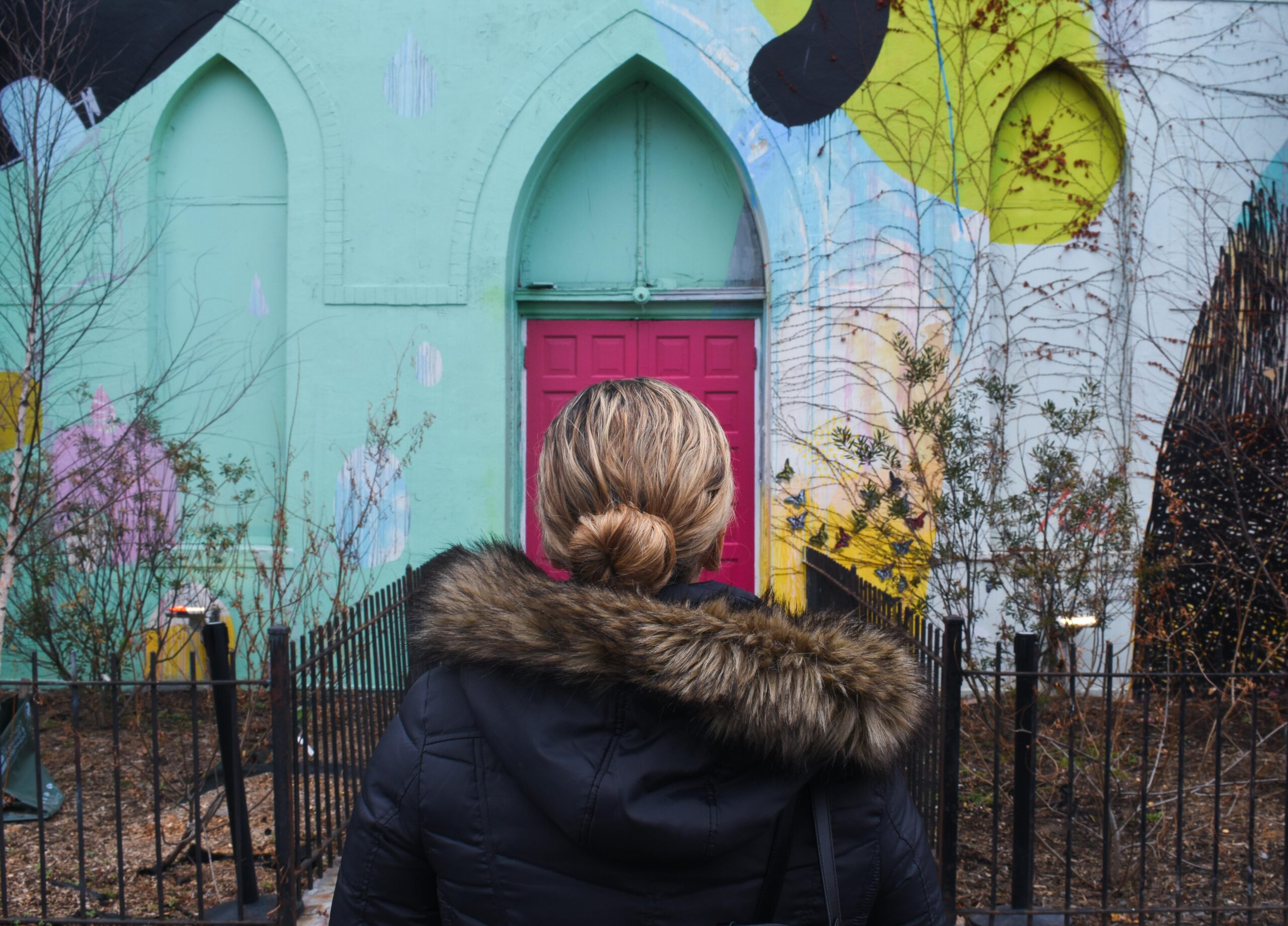Shortly after the death of my mother in April, 2001, I found myself in her apartment facing the task of emptying out and closing up a home – a task involving a wide range of demands, physical as well as emotional.
After many phone calls, all the necessary arrangements were made. The things we kept were packed and mailed back home. The things we gave away were donated to various charities and thrift shops. What remained was simply thrown away. And when the apartment itself was finally empty, it was time to lock up and leave, to hand in the keys and to know that we would not be back.
It was at that moment that I realized that there was no ritual way to mark this event, and particularly this moment of this event. I had been so busy with all the arrangements that I had not anticipated the need to structure ritually this transitional moment.
I further realized that even if I had, there was no obvious place to look in the catalogue of Jewish traditions and rituals. There are many variations on the ceremony of Chanukat HaBayit (dedication of a home) – many of which are amplified versions of the blessing and ritual for affixing a mezuzah – but there is no parallel ritual for ending the connection to a home.
I shared these observations with a number of friends, all of whom seemed to have a similar moment in the life of their family, although not necessarily resulting from a death. A home that a family has lived in for three, four, five or more decades may be closed when the (grand)parents decide to relocate, or move to smaller quarters, or need assisted living. Other homes are left for the simple reason of moving to another. We all agreed that there ought to be some ritual, liturgy or other type of expression with which one takes leave of a home for the last time.
Of course, there are different emotional dynamics at work in each of these scenarios. Perhaps it is a function of my age and that of most of my friends, but the transitional moment of closing a home following a death of a parent was the one for which I was motivated to shape a ritual expression.
In thinking about what one might do in this circumstance, I am aware that people and their parents have differing relationships. Some are wonderful, some are terrible, many are somewhere in between – and all of them are complex. The tone of a ritual way of closing a home would necessarily reflect the tone of the relationship. Some might find this a sad but celebratory moment; others might experience it as both sad and saddening, calling up too many difficult moments of a difficult relationship. In the suggestions that follow, I have tried to account for this range of reactions with some alternative ideas.
My own default is to begin with what might be available in Jewish tradition, rather than creating something new. While Reconstructionists have been exemplary in the shaping of new rituals, there is always an artificial nature to innovative ritual, for it lacks the history, usage and recognition that makes ritual “work.” Using existing symbols and words at least brings some of the power of the familiar to a moment which the tradition has not yet sanctified with normative expression.
A first step, upon entering the home, might be to recite the Ma Tovu “How good are your residences, O Jacob; your dwelling places, O Israel.” We might then place a photograph of the deceased in a central place, and kindle a yahrzeit candle alongside it, making the presence of the deceased tangible. This seems important: What struck me as most dissonant upon entering my mother’s apartment was the assemblage of items that bespoke her presence – her clothes, her books, her notes, her flies, her medications, her furniture – yet she was not present.
The next step might be to bring forward one of the traditional rituals normally associated with pre-funeral arrangements, whereby the living ask forgiveness of the deceased. Unless someone was obsessively orderly about accounting for the disposition of every personal item, decisions will now have to be made about what gets kept and what does not.
We might begin this sorting by acknowledging that the living have no way of knowing the value and meaning attached to each object in the home, and that inevitably something that ought to have been kept will be given away and pass out of the family. We might pray to act respectfully toward the possessions of the deceased as she or he would have wanted us to, and ask forgiveness in advance for any inadvertent transgressions.
We might then affirm the importance of perpetuating acts of generosity in the name of the deceased, and determine what would be donated to charity as an act of tzedakah on behalf of one who can no longer contribute.
A final act before one begins to attend to cleaning out a home might be to designate one box as a genizah. A genizah is a place where worn-out ritual objects, as well as any piece of paper on which the four-letter Hebrew name of God is found, can be placed for sacred storage and/or eventual burial. In cleaning out a home, we inevitably come across certain things for which we have no use yet with which we cannot part. Perhaps we only want them preserved for children and grandchildren, in recognition of how few objects actually survive the march of the generations. Stories, memories and customs are often passed down, but how many people can hold in their hands actual objects that their grandparents and great-grandparents held, used, displayed in their home?
What are we going to do with it?” is the often-asked utilitarian (and practical) question when closing a home. Sometimes, the answer only needs to be “keep it.” Having a genizah box helps us set aside objects whose sanctity lies simply in their having been a part of our family and its story.
With these preliminary steps taken. we set about the task of sorting, saving, salvaging and surrendering.
The most difficult moment in closing a home comes when “the work” is done and the now-empty home stands as a silent evocation of the absence of the person who once lived there and was part of our own life. What might be done by way of ritual expression before one crosses the threshold and turns the key for the last time?
I suggest that the liturgical piece of our tradition that might be brought forward at this moment is the long confessional of the Yom Kippur service (“Al Chet, for the sin we have sinned before God by…”). Even in the best of relationships, a large part of the grieving process is making peace with the memory of the deceased. Especially when dealing with a parent, the complex and complicated weave of history, feeling and fact rarely leaves any of us without some ambiguity and some unresolved issues.
Reciting the confession of sin in the now-empty home of our parent or parents is a way of acknowledging the pain we no doubt caused them, the offenses, both conscious and unintentional, that we visited upon them, and to ask for their forgiveness. This is also a moment in which to acknowledge the pain they caused us, the offenses both intended and inadvertent, the hurts and the wounds, and to offer our forgiveness. If we recite thoughtfully and honestly, we will likely find that at some time in our relationship with our parents, we managed to come into conflict around every one of those sins.
Following the confession of sin and the asking and offering of forgiveness, additional readings, biblical passages, or poetry might be recited, as appropriate. (Proverbs 4:1-9 is one appropriate option from the tradition.) Here, family traditions should dominate. A favorite or meaningful passage from the life of the family in the home would likely speak more strongly than an “official prayer.”
We might then attend to the removal of the mezuzah on the main doorway (and/or the other doorways of the home). As the affixing of a mezuzah at the beginning of one’s residence in a home is a symbol of consecration and identification, removing the mezuzah is a necessary symbol of desanctifying the home and confronting the reality that we can no longer identify this home with this person.
There is, however, a custom of leaving a mezuzah in place, so that if the next resident of a house is Jewish and either neglects to attach a mezuzah or does not do so in a timely manner, the house will not lack this symbol. If one is concerned about maintaining this tradition. I would suggest leaving a new mezuzah inside the home with an appropriate note explaining what it is and how it is attached – and suggesting that a new resident who is not Jewish use the pre-paid mailer addressed to the nearest synagogue so that someone who needs a mezuzah might make use of this one.
We could then recite the El Malei Rachamim prayer (“God, full of compassion, grant perfect peace to the soul of… “) in which we pray that the deceased be gathered under The wings of the Shekhinah and bound up in the bond of life.
Finally, we could extinguish the yahrzeit candle that has burned throughout our closing of the home, take the picture that has stood alongside it, and close the door for the last time. Words from tradition that might be spoken at this moment:
- Barukh attah Adonai Eloheinu ruach ha-olam, dayan ha-emet – Praised is the Judge of truth (the traditional words acknowledging loss):
- Barukh attah Adonai Eloheinu ruach ha-olam, ha-tov v’ha-meitiv – Praised is the One, life of all existence, whose essence is the goodness we experience (the benediction of appreciation for the good things we have experienced);
- Conclude with Adonai yishmor tzeitekha u’vo’ekha, mei’ata v’ad olam – May God watch over you when you go out and when you come in, now and always.
Enduring ritual grows from the ground up, shaped by people as they read their own situations through the symbols and language suggested by tradition. The advantage of folk traditions and customs is that they are not beholden to being done “the right way.” What has been suggested here is only one effort to structure a transitional moment that seems to stand in need of consecration. Some of it may be useful in part or in whole to others facing the same moment in the life cycle.
However we choose to sanctify the process of closing a home, may our efforts bring us to affection and honoring of the deceased; to forgiveness and reconciliation within our relationships; and to appreciation and celebration of the good things that happened in this home over the years.
Originally published in Reconstructionism Today, Winter 2002-2003. Used by permission of Reconstructionism Today.











